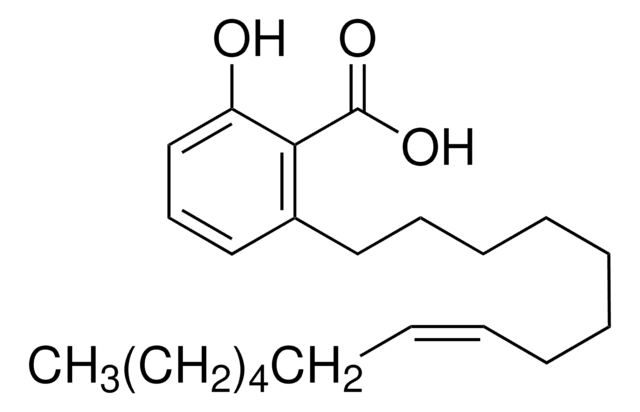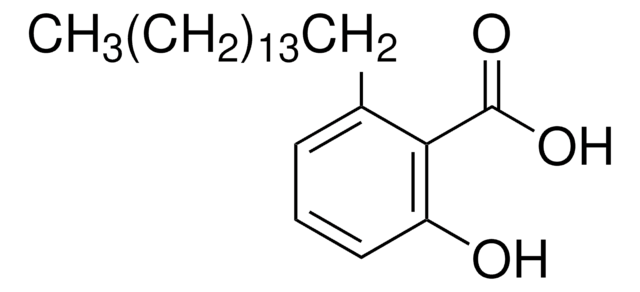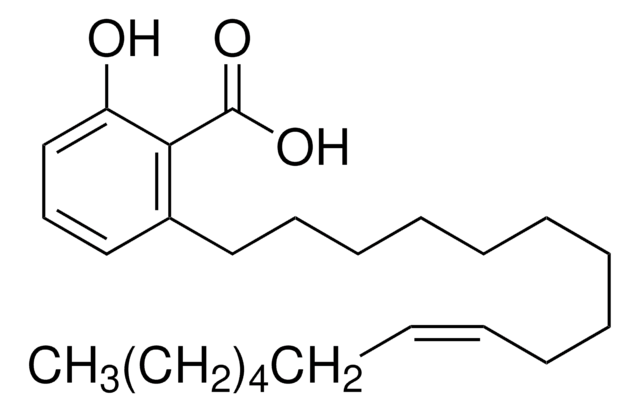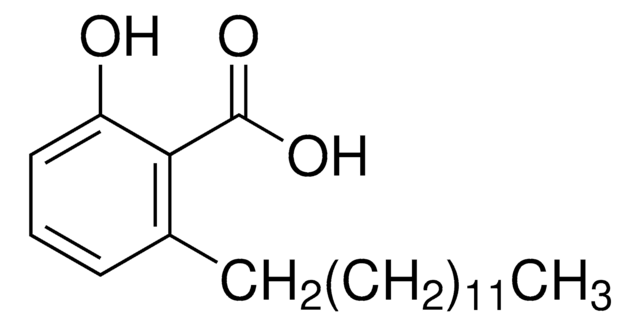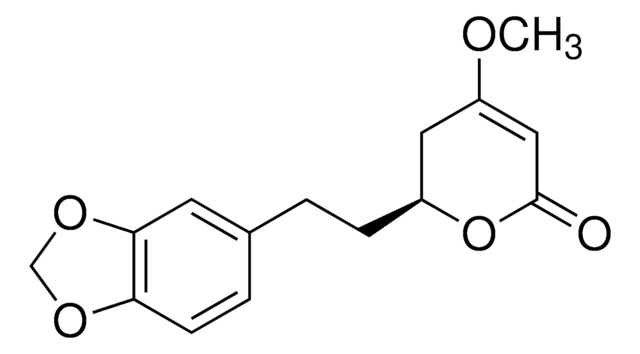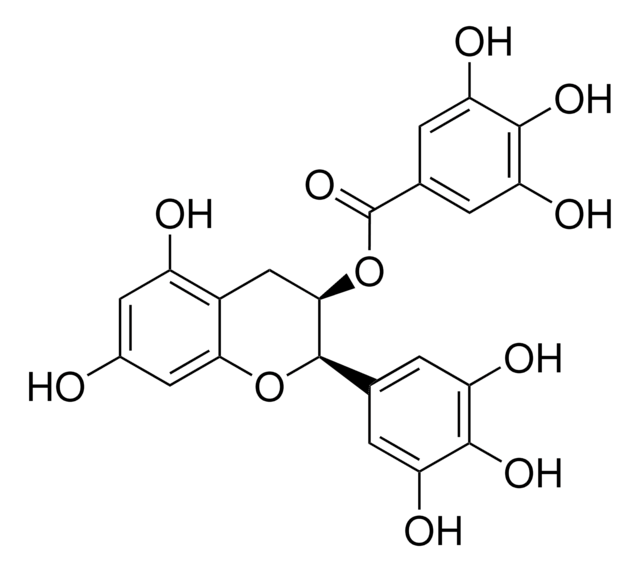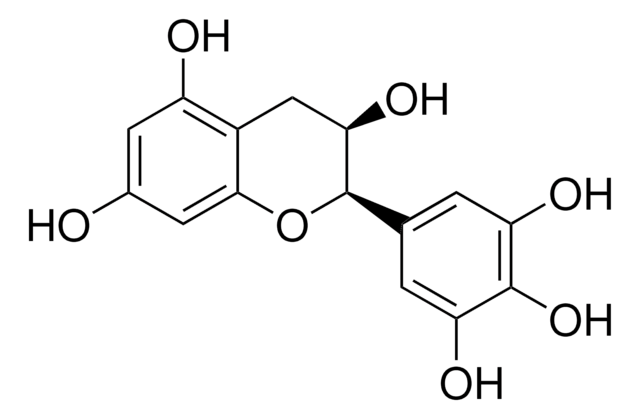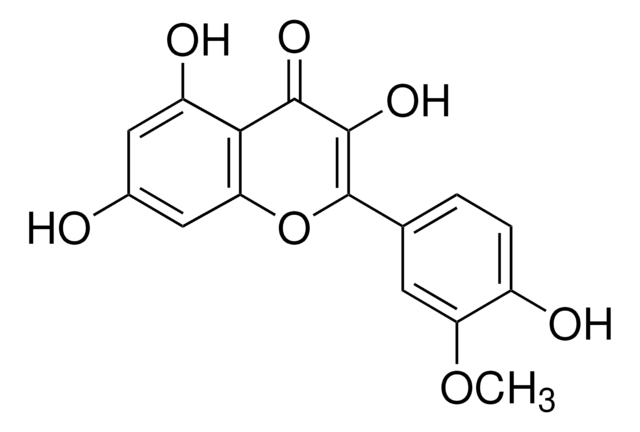02580585
Ginkgolic acid C15:1
primary reference standard
Synonyme(s) :
6-[(8Z)-Pentadecenyl]-salicylic acid, Ginkgolic acid I
About This Item
Produits recommandés
Qualité
primary reference standard
Fabricant/nom de marque
HWI
Application(s)
food and beverages
Chaîne SMILES
CCCCCC\C=C/CCCCCCCc1cccc(O)c1C(O)=O
InChI
1S/C22H34O3/c1-2-3-4-5-6-7-8-9-10-11-12-13-14-16-19-17-15-18-20(23)21(19)22(24)25/h7-8,15,17-18,23H,2-6,9-14,16H2,1H3,(H,24,25)/b8-7-
Clé InChI
YXHVCZZLWZYHSA-FPLPWBNLSA-N
Vous recherchez des produits similaires ? Visite Guide de comparaison des produits
Autres remarques
Mention d'avertissement
Warning
Mentions de danger
Conseils de prudence
Classification des risques
Aquatic Chronic 4 - Skin Sens. 1
Code de la classe de stockage
11 - Combustible Solids
Classe de danger pour l'eau (WGK)
WGK 3
Point d'éclair (°F)
509.9 °F - (calculated)
Point d'éclair (°C)
265.5 °C - (calculated)
Faites votre choix parmi les versions les plus récentes :
Certificats d'analyse (COA)
Vous ne trouvez pas la bonne version ?
Si vous avez besoin d'une version particulière, vous pouvez rechercher un certificat spécifique par le numéro de lot.
Déjà en possession de ce produit ?
Retrouvez la documentation relative aux produits que vous avez récemment achetés dans la Bibliothèque de documents.
Les clients ont également consulté
Notre équipe de scientifiques dispose d'une expérience dans tous les secteurs de la recherche, notamment en sciences de la vie, science des matériaux, synthèse chimique, chromatographie, analyse et dans de nombreux autres domaines..
Contacter notre Service technique